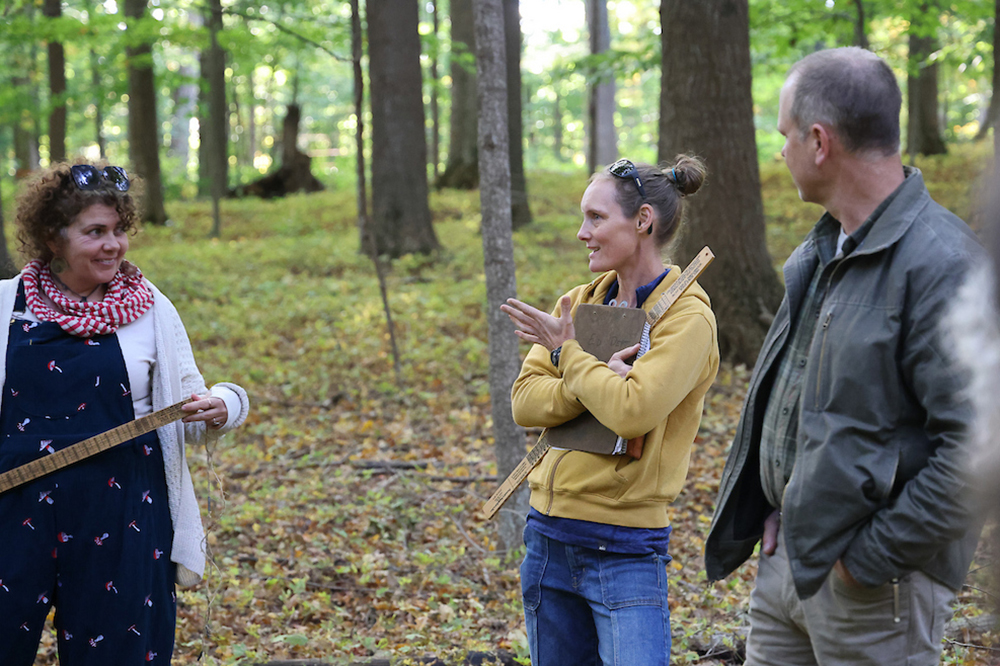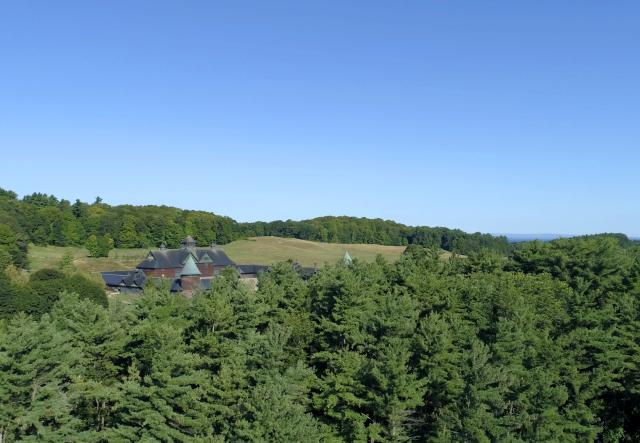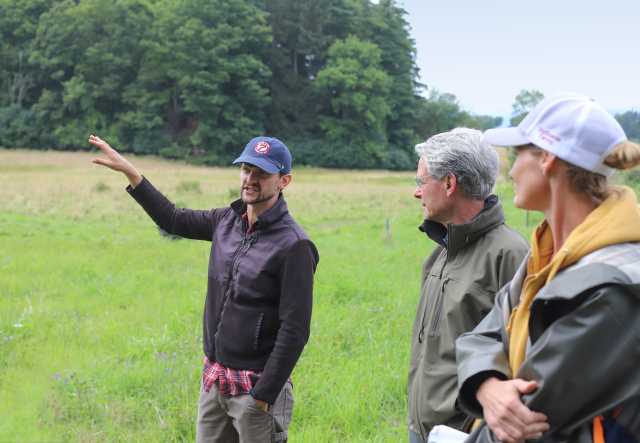Seeing the Forest *and* the Trees
Reimagining our forest management
If gardening is “the slowest of the performing arts,” what about forestry? Managed over decades not days, often for outcomes less tangible than a vibrant flower or robust veggie, forests require a different mindset.
No one knows that better than our Woodlands Manager Dana Bishop. While revising our Forest Management Plan, she’s had time to thoughtfully consider how we can support our woodlands, and how they support us. She shares what’s on her mind.
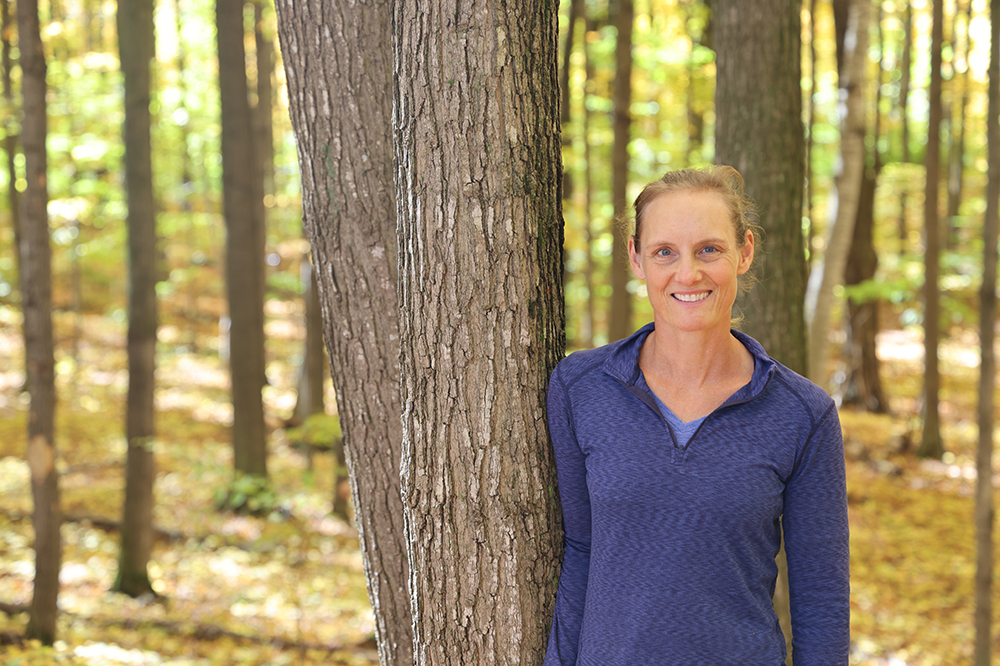
What do forests do for us?
It’s easy to be moved by the bounty of a healthy garden in July, but think about what a healthy forest “produces”: Maple syrup, firewood, lumber, recreational opportunities, wildlife habitat, carbon sequestration, clean air, and clean water (healthy forest soils are sponges!). This is what we are trying to grow and protect with our plan, especially in the context of our Climate Action Plan.
What role do trees play in our changing climate?
I like thinking about our “breathing relationship” with trees: Trees basically breathe in carbon dioxide and exhale oxygen. We do the opposite. And this relationship is foundational to life! Trees then store that carbon (carbon is the biggest contributor to climate change) in their structure. So when you talk about climate action, you have to talk about how we’re protecting forests as carbon sinks.
How is our new Forest Management Plan protecting forests as carbon sinks?
While our old plan was very thoughtful, it didn’t mention carbon at all. And they didn't teach about carbon when I was in school so I'm learning a lot. We’re mostly adjusting our harvesting. Old school harvesting often cut the biggest trees, because they yield the best logs. We want to keep those big trees, because they’re doing the big carbon storage work. We’ll focus on harvesting 15- to 18-inch diameter trees, especially when that size is well represented in a forest stand. And we’ll use "defective" trees not just for firewood, but to make “character-marked” lumber for projects onsite.
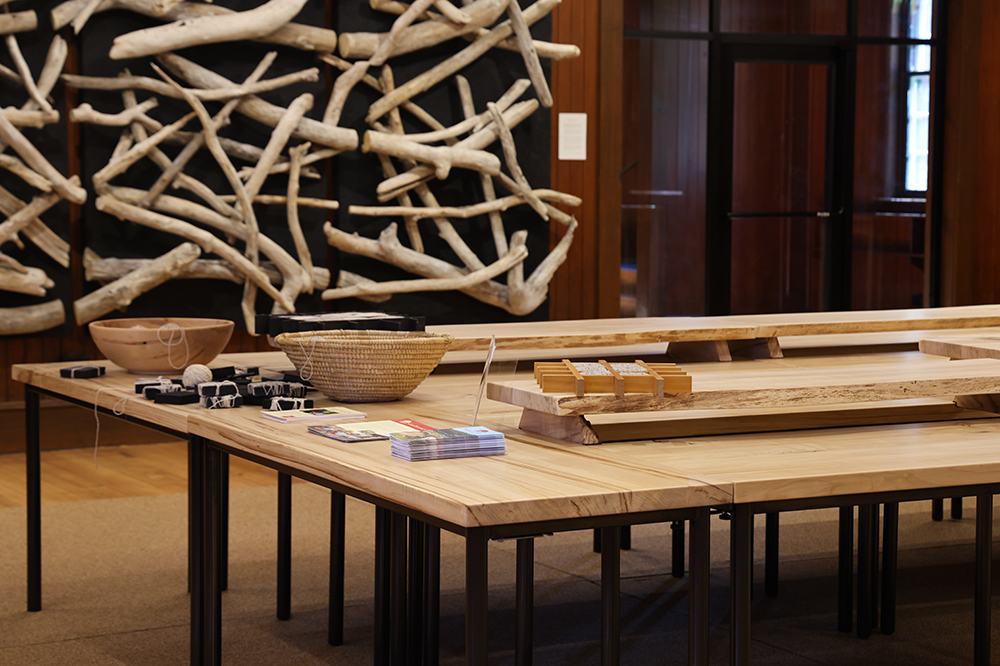
So you’re just keeping big trees?
It’s not that simple. Yes, we need to keep big mature trees to retain carbon. But to keep resilient carbon, we have to support the whole ecosystem, not just a bunch of trees. What I mean is, you have to consider the diversity of plant species and their ages. So a healthy forest system looks something like mature trees thriving, then slowly dying. Their aging bodies feed bugs and birds, create nesting cavities, etc., and their dying allows sunlight to reach the forest floor, where shrubby elderberry might give way to maple seedlings. It’s beautiful and organic and totally remarkable.
How do you achieve “resilient carbon” in the forest?
The new plan looks more closely at the ecology of each stand. (The plan divides our 400 acres of forests into 5- to 15-acre stands defined by use, ecological community, or special management). For each stand, we’ve inventoried what's growing now and what plant species in the understory are likely to take their place when we harvest. In some stands, the answer is clear; in others it’s not. (I’m proud that we enlisted forestry students to do some of the inventory work.)
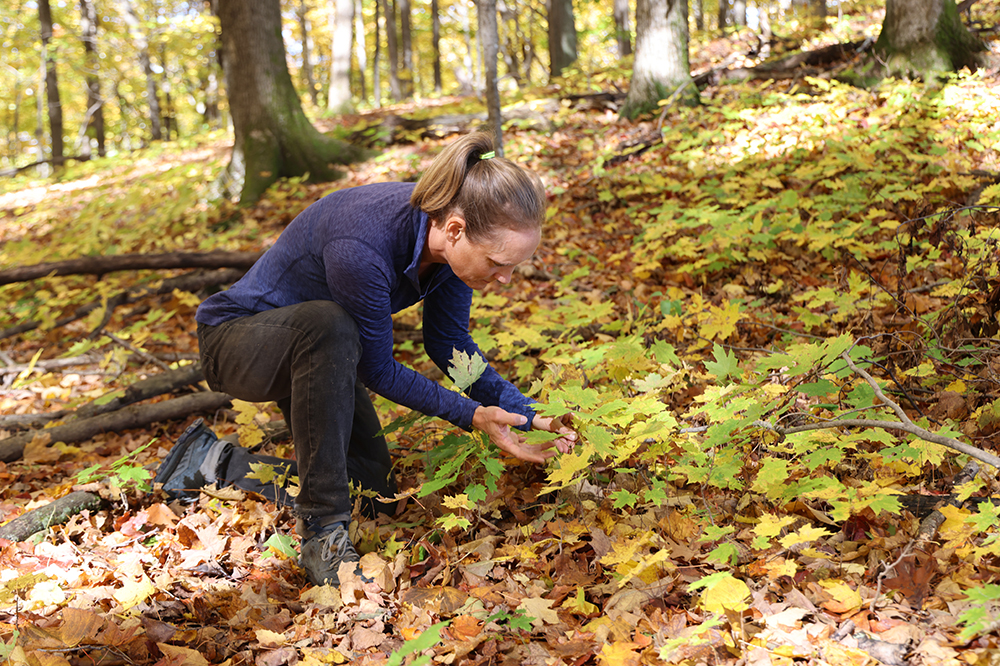
What are the biggest challenges to the plan?
Invasive plants: garlic mustard, buckthorn, Norway maples. These species didn’t evolve here, so they basically grow unchecked, especially along the edges of our fragmented forests. There aren’t many great strategies for managing them either other than constant monitoring. I love to see native pines or cherry seedlings grow when we remove buckthorn, but they need so much help to make sure buckthorn or other aggressive plants don’t outcompete them for resources–water, nutrients, light. Once those seedlings are established, though, they thrive. In some areas, we may need to plant what we want if we want something besides buckthorn or Norway maple.
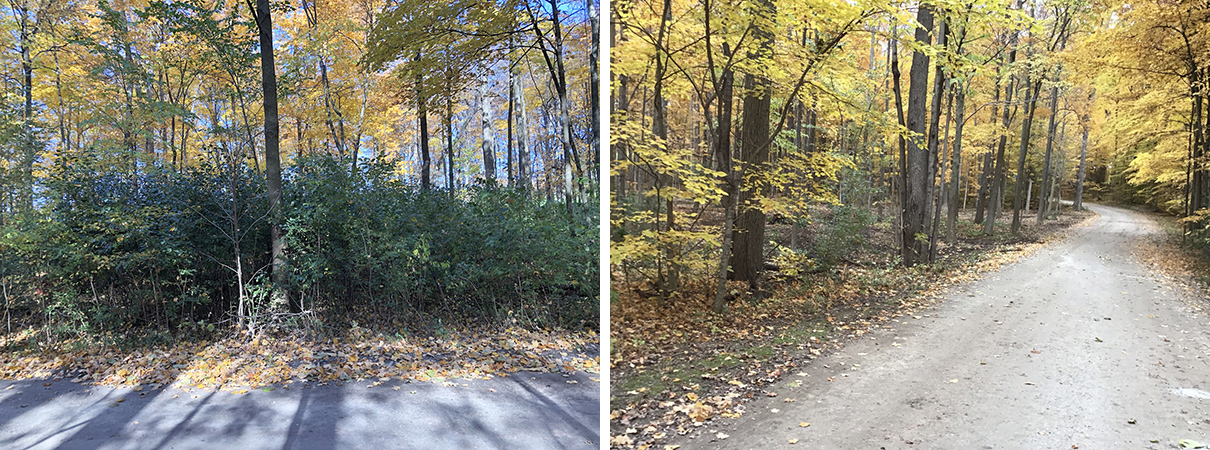
The large grazing deer population and exotic worms in the soil are additional challenges. But fencing can keep the deer out, which is what we’ve done with Marshall Woods, and encouraging species diversity is currently our best shot at regaining healthy soils.
What about the challenge of climate change?
Climate change is happening. Sometimes, I think that it’s happening very, very fast. But I also think we're kind of in a transition, at least in the forest, where things are still shifting between business as usual and change.
What are your take-aways from building this new plan?
I want to be able to tell the carbon story when we do harvests: to track the carbon we have, what we're removing, and how long it takes to restore it. It's exciting to write a plan to help us do that.
It's also been really fun to get to know each forest stand better. To think about its past, present and future and the different time scale of the forest. I like thinking about the future of these tiny eight-year-old maples, and comparing that to my children's future. What will the earth be like when this little maple grows up? What will it be like for our kids? I tend to look down more than up when I'm in the forest, because it really brings me joy to see these tiny trees growing, and to think about what's to come. It's not always very clear, but I'm excited to be a part of nurturing a healthy forest.
